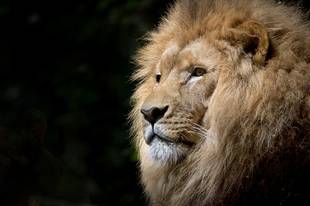
The success or failure of an organization is largely dependent upon the effectiveness of its leaders. Effective leadership is that attribute which set apart organizations that succeed from organizations that fail.
In all societies, simple or complex, primitive or modern, rural or urban – there is always a man or a woman who leads the people to prosperity or oblivion, freedom or slavery, democracy or depotism – one who stands tall among the rest. He/ she is labelled as a leader – one who knows the way, shows the way, and leads the way. A true and well-loved leader is long remembered and does not perish in the dustbin of history. His greatness transcends time and space. As one poet aptly puts it:
“Lives of great men all remind us we can make our lives sublime, And parting leave behind us Footprints in the sand of time!”
Qualities of a Leader
Most people believe that leaders have special traits that make them different from non-leaders. Such traits include intelligence, dominance, charisma, enthusiasm, courage and determination, self-confidence, high sense of integrity, tact and diplomacy and involvement. However, studies have shown that attempts to attribute leadership on the basis of personality traits alone have consistently failed. People are caught in variety of social situations and events that leadership depends more on the situation and the need to be satisfied at that given situation than on the person. In conclusion, many people are capable of leadership if the needs of the group fit their skills. The person deemed most appropriate to lead at any given moment may change as the situation changes.
Groups need leaders for two basic purposes: to direct various tasks and provide support to group members. The act of directing a group toward its goal is known as task leadership, and the act of maintaining good spirits is known as socio-emotional leadership.
Styles of Leadership
There are different types of leadership. These are as follows:
- Functional leadership. The functional leader need not occupy a vantage position but he is accepted by the group because he wields influence on the thinking and behaviour of the members. Functional or operational leadership is sometimes called emerging leadership. Ex. The teacher – leader.
- Status leadership – The status leader occupies a position of authority such as the manager, director, principal or supervisor. He holds a vantage position and is accepted as leader only because of innate bureaucratic fear of a person in authority.
- Task-oriented leadership. A task-oriented leader is production – oriented and gives emphasis to the needs and goals of the organization. He is high on tasks but low on relationship.
- Relationship or person-oriented leadership. A person-oriented leader stresses building and maintaining good personal relations between himself and his followers. He has more concern for the needs and feelings of the individuals in the organization. He is seen as high in relationships but low in tasks.
- Transactional leadership. A transactional leader scores high both on tasks and relationships. He sets a high standard of performance but takes interest in everyone. He is a team player.
- Authoritarian leadership. The authoritarian leader decides on the goals to be achieved and prescribes how this is to be achieved. He assumes that he is more experienced, more intelligent and better trained than any and all members of the group.
- Democratic leadership. A democratic leader engages in cooperative planning. He believes that the members of the group are as capable as he is in making decisions in relation with their particular training and experience.
- Tradition-oriented leadership. A tradition-oriented leader clings tenaciously to established practices and norms and perceives change with no little apprehension and distrust.
- Development-oriented leadership. A development-oriented leader conceives change as a component of development, making sure that whatever changes are adopted shall improve the delivery system of the organization, and consequently the organizational product.
Is There a Best Style of Leadership?
Empirical studies tend to show that there is no best style of leadership. Leadership style must take into consideration the following factors:
- Level of education of members
- Cultural characteristics of followers
- Standard of living of the group
- Particular situations. e.g., emergency situations; cries – oriented organizations.
- Maturity of the staff
Different situations and varied personalities require different leadership styles. As in other fields of human endeavour, the eclectic approach, coupled with the exercise of a great deal of common sense, seems applicable to many, if not most, situations.
The truly effective leader is a man for all seasons. Problems, no matter how small, do not escape his notice. He exemplifies everything to all his people. As Alex Ranales sums up the qualities of effective leadership: “compared with the rest of the group, he is brighter, better adjusted psychologically, tends to display better judgment, can interact with greater perceptiveness, tends to give and ask for more information, and to take the lead when problem situations arise”. A true leader knows the way, shows the way, and leads the way.


















